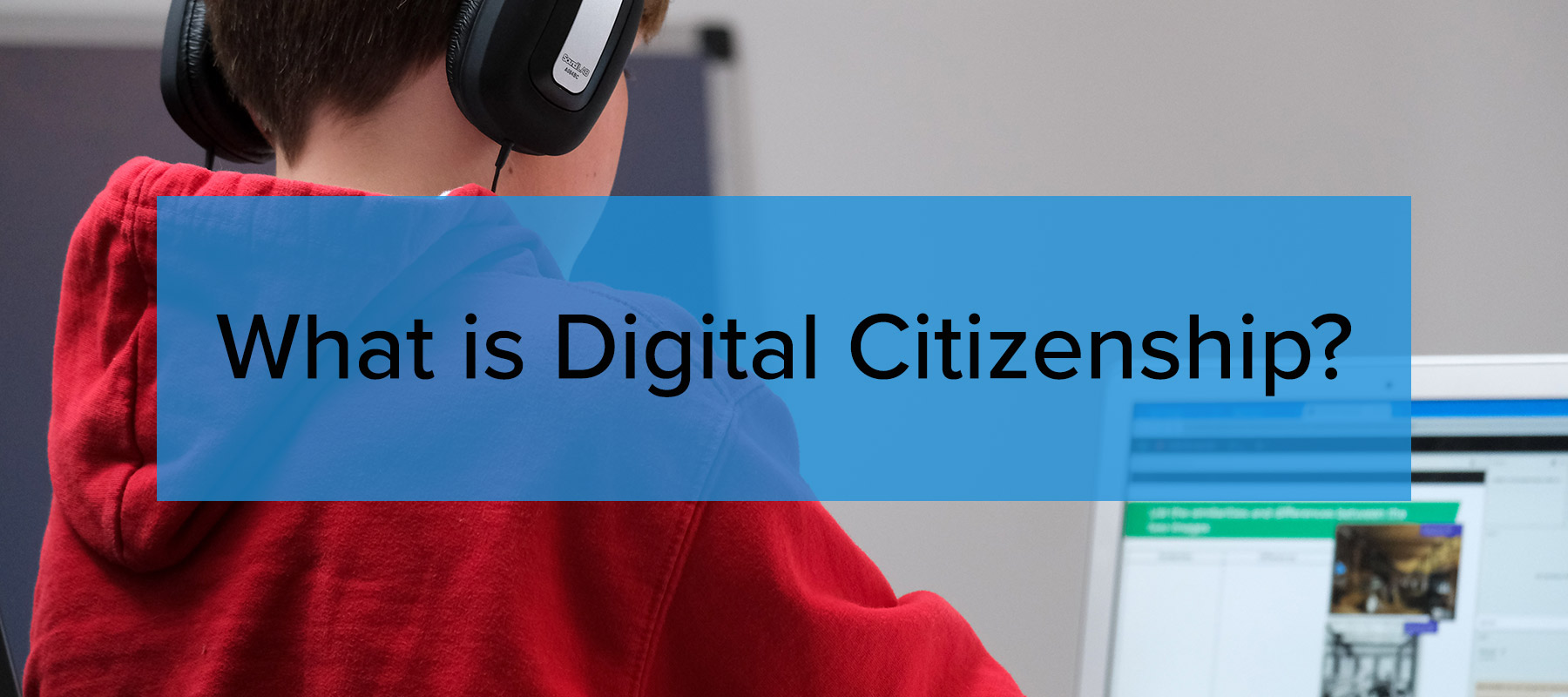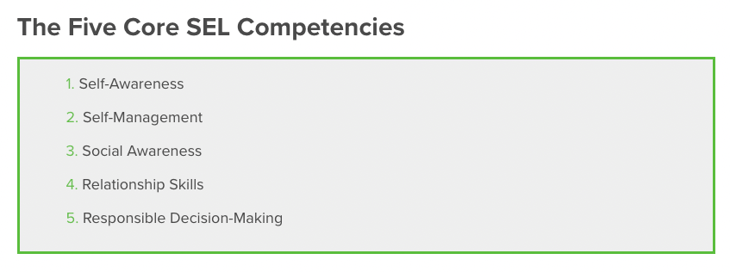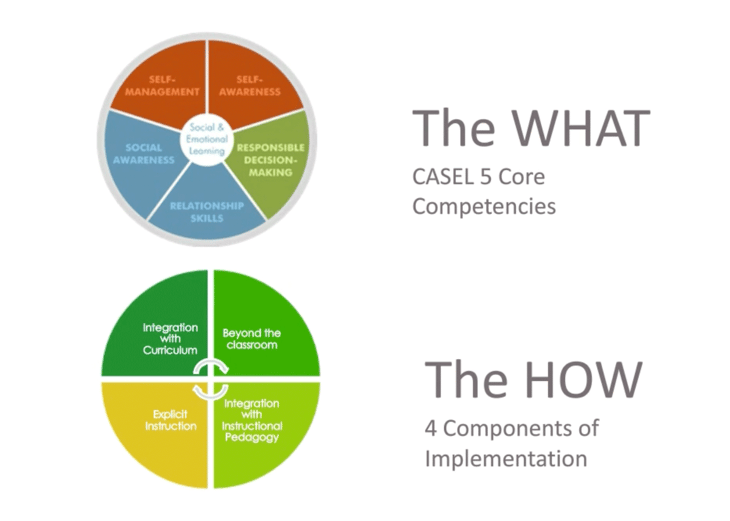
What is Digital Citizenship?
Today’s students live in a world transformed by digital technologies. Connections via social media, chat apps, and games are easier than ever before. But any landscape has its risks, and growing up with the internet doesn’t always mean you know how to use it safely and positively.
Digital citizenship education aims to prepare students to engage in communities online for personal, professional and educational purposes while safeguarding their own and others’ wellbeing.
In this post, we’ll examine the concept itself, break it down into its essential components, and discuss some approaches to teaching digital citizenship.
What does digital citizenship mean?
Digital citizenship refers to the ability to engage positively, critically and competently in digital environments, and to take their place as a member of a community which is increasingly online: the ability to be a citizen digitally. That means using skills like empathy, consideration, and responsible decision-making — all key SEL (Social and Emotional Learning) skills.
This isn’t about teaching students what they may and may not do on school computers. It’s about teaching them how to manage their (increasingly) digital lives so that they keep themselves and others safe outside the classroom too.
Why is digital citizenship important?
More and more of life is online. Work and education both moved online in unprecedented ways during the pandemic, but those changes were building on a shift that had already started. Social life now takes place, not just in person and on the phone, but spread across multiple messaging apps and mediated through multiple message-board and social media platforms. This has profound implications for how we understand citizenship. It also has profound implications for children and young people both now and in the future.
Employers typically use individuals’ social media accounts as a hiring criterion. Colleges look at students’ digital footprint to determine admissions. Law enforcement look too, for their own reasons. So it’s important that students manage their online lives well for their own self-interest.
However, in the same way that citizenship implies responsibilities as well as rights, students actually are digital citizens: members of a community to whom they owe certain standards of conduct and consideration. They need to learn how to make sure others are safe, how to keep themselves safe, and which principles to refer to when in doubt.
What concepts does digital citizenship include?
- Empathy
- How the Internet works
- Understanding user data
- Practicing digital literacy
- Acknowledging the digital divide
- Practicing digital wellness
- Securing digital devices
Some of these are also parts of the SEL curriculum — an ideal opportunity for cross-curricular learning, or a great way to provide some concrete content for the empathy portion of the SEL curriculum. Others are digital-specific SEL practices, or technical know-how related to the internet.
1: Empathy
Empathy is a crucial factor in digital citizenship because of the intermediating effect of digital environments. It’s all too easy for students to feel like they’re ‘posting something to Facebook,’ not ‘saying something to Tracy’ — even though, to Tracy, those remarks will feel just as personal as if they had been said to her face.
2: How the internet works
This doesn’t have to get too technical. But if students come away with an understanding of where websites are in real space, how their information moves around, and what hardware is involved, they’ll have a better grasp of what’s happening when you post, log on, download or comment. Understanding what’s happening behind the scenes lays the groundwork for understanding user data and making better decisions online.
3: Understanding user data
User data is a key component to understanding how the modern internet works. Most websites collect some data from us. Social media sites typically collect large amounts, including usage data. Businesses collect location, usage, and personal data and sell it on or transfer it to partners. What relationship do we have with our data? Do we own it or control it? What are the state laws on data collection?
Understanding how user data works opens the door to educate students about how it can be misused, such as by data mining, identity theft and doxxing. It helps students learn how to have more control over their user data, what user agreements mean in practice, and how better to stay safe online. This can include the understanding that it takes more than an incognito window to be anonymous and secure online.
4: Practice digital literacy
Digital literacy is analogous to media literacy. It means reading information online with the understanding of what it means, where it originates, what purpose it’s meant to serve and for whom, and whether it’s factually accurate.
A crucial element of digital citizenship is helping to reduce the spread of misinformation and hate speech, which requires students to be able to recognize it and differentiate it from legitimate news and opinion material. This is also where students learn about ethics, online self-protection, and cyberbullying.
5: Acknowledging the digital divide
The digital divide is the gap between those who have access to modern digital tools and those who don’t. It’s not an absolute gulf between one group that has perfect digital access and another that has absolutely none, but between populations with starkly different degrees of access.
If you’re not knowledgeable about this specific subject, you probably assume that these low-access populations are in the developing world. Your students probably assume that too. But in fact, only 75% of Americans have good, reliable internet access. There are divisions based on device, too, with higher-income Americans more likely to access the internet from home via desktop computers rather than relying on metered mobile access. This divide affects which opinions are heard online.
6: Practicing digital wellness
Digital wellness is the practice of prioritizing your own, and others’, wellbeing when using digital devices and the internet. It’s easy to scroll hours away on mobile devices, and it’s easy for many of us to go from sitting in front of a screen at work to sitting in front of a screen at home.
The analogy is with food: once, our ancestors had difficulty obtaining food. In particular, salt, sugar and fats were hard to obtain. Now most of us can easily access enough high-fat, high-salt, sugary food to damage our own health, whenever we like. We have to practice wellbeing by choosing not to eat those foods.
Students also need to learn how to recognize when they’re interacting with or viewing material that makes them feel bad about themselves to no good purpose, and disengage consciously to prioritize their own well-being.
7: Securing digital devices
Students need to know how they can keep intruders out of their digital devices, both physically and remotely. That means things like choosing appropriate passwords and using on-device security measures. It’s also a good time to introduce VPNs, the concept of password and data phishing, social engineering, and antivirus and antimalware technology.
How should digital citizenship be taught?
Digital citizenship is a crucial set of attributes and abilities, not a specific skill. It’s more like reading comprehension or basic maths, fundamental to success in a range of endeavors, and less like domain-specific factual knowledge. So the best way to teach it is to build it into other curricula.
One natural match is with SEL:

Integrating these competencies with digital citizenship education is a natural fit and helps answer the question of where schools are to implement their SEL lessons.

The components of implementation suggested here make SEL and digital citizenship a perfect fit. SEL gives us a lens through which to view digital citizenship; digital citizenship gives us material on which to practice SEL skills.
However, the same framework can be applied to other subjects. In particular, English class is a perfect place to study online speech, misinformation and bias; the same subject makes a natural companion to the interrogation of other historical sources. The important thing is to do it with confidence and commitment, and to build it into the curriculum in a serious and considered way. If it’s treated as an afterthought, students will pick up on that attitude and view it as a mere formality instead of a life skill.
Conclusion
Digital citizenship is increasingly crucial in an increasingly digital world. These are the skills that enable students to safely engage online with social, professional and educational communities. They’re vital for students’ wellbeing now, and will become even more important in the future. While technology will undoubtedly change, with the potential for augmented reality and VR digital environments around the corner and new social platforms emerging every few years, the principles will remain the same.
Armed with a basic understanding of how the infrastructure they use actually works, students can avoid online scams and worse, dodge potential radicalization and misinformation, and avoid contributing to ostracization and cyber-bullying.
Equally important, they can prepare to use the internet positively to inform, create and participate with confidence.
More From Our Blog
-

How to Use PowerPoint for Digital Signage
To create stunning, attention-grabbing, and effective digital signage content, you need the help of content creation and presentation tools. One of the most popular is Microsoft PowerPoint, owing to[…]
Read More -

120 Digital Signage Content Ideas
So…. you decided you would invest in some digital signage software and you need some ideas for ways you can make it stand out. This article is your go-to source for the best digital signage content[…]
Read More -

2025 Digital Signage Benefits and Statistics
The digital signage industry has been growing steadily for years now, and it shows no signs of stopping anytime soon. Businesses all over the world are investing in digital signage systems, be it for[…]
Read More
Keep Your Displays Interesting – Pick New Templates Every Week!
Every week, we send template recommendations that will make you look great and improve your audience experience. And the best part, they save up to 16 hours of content creation time every week!
12,300+ Organizations Trust Rise Vision, You Can Too
Schedule a Free Demo
You deserve the #1 all-in-one platform for digital signage, screen sharing, and emergency alerts.



































